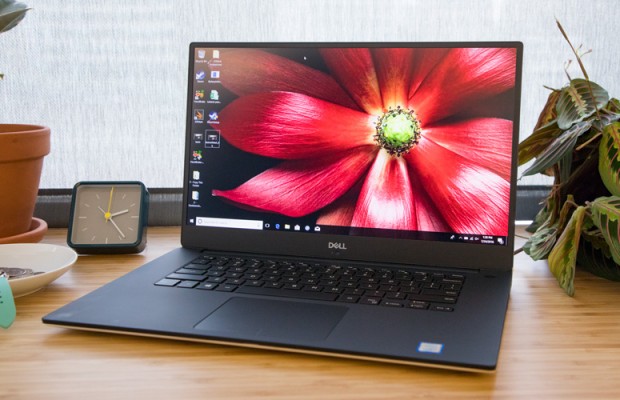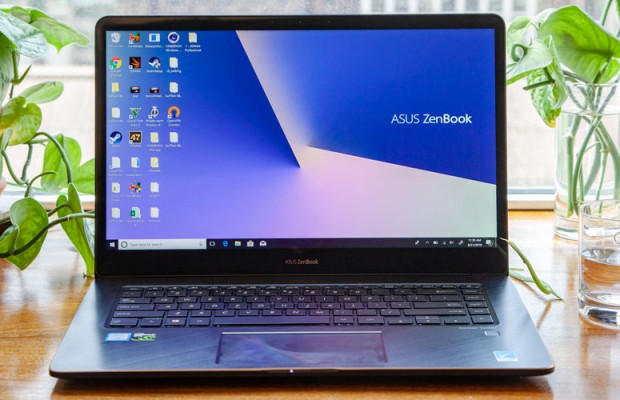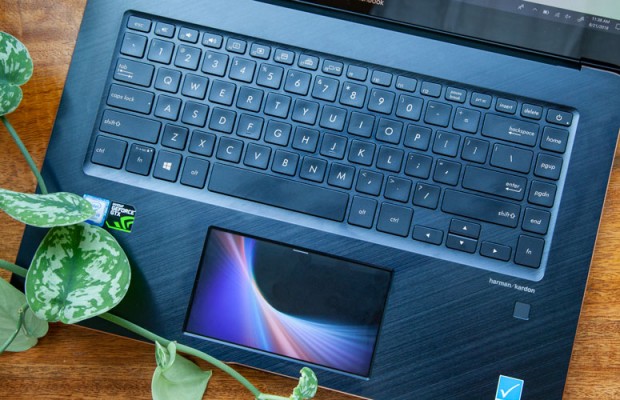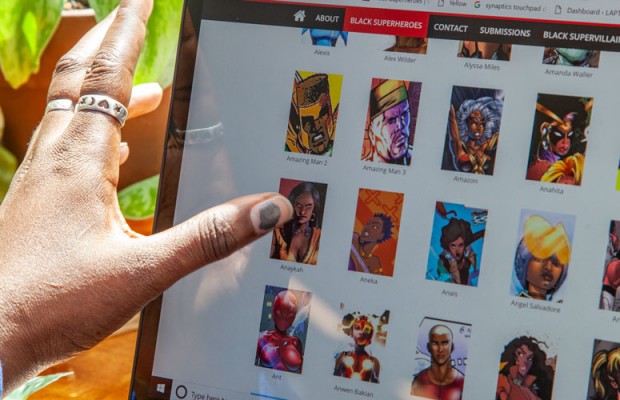Dell XPS 15 vs. Asus ZenBook Pro 15: Face-Off!
If you want to splurge on a premium laptop with a sparkling 4K display and discrete graphics card, there are two gorgeous powerhouses that should be on your short list: the Dell XPS 15 and the Asus ZenBook Pro 15.
The XPS 15 ($1,849 as tested) rocks an 8th Gen Core i7 processor, while the ZenBook Pro 15 ($2,299 as tested) is outfitted with a blazing Core i9 CPU, and both systems come armed with GTX 1050 Ti graphics. Between their power and vivid displays, these machines are in the top tier of multimedia laptops, but only one of them can come out on top. Here's how they stack up:
| Row 0 - Cell 0 | Asus ZenBook Pro 15 | Dell XPS 15 |
| Starting Price | $1,799 | $999.99 |
| Intel Processors | 8th Gen Core i7, Core i9 | 8th Gen Core i5, Core i7 |
| GPU | GTX 1050 Ti Max-Q | Intel UHD 630, GTX 1050 Ti Max-Q |
| Display | 4K (3840 x 2160) touch screen | 15.6 inches (1920 x 1080), 4K (3840 x 2160) touch screen |
| RAM | 16GB | 8GB, 16GB, 32GB |
| Drives | 512GB SSD | 1TB 5,400-rpm SSHD; 256GB SSD; 1TB SSD |
| Ports | Two USB 3.1, two Thunderbolt 3, HDMI 1.4, headphone/mic, microSD slot | Three USB 3.1, two Thunderbolt 3, HDMI 2.0, DisplayPort 1.2, VGA, headphone/mic, SD card slot, Noble lock slot |
| Battery Life (hrs:mins) | 5:14 (touchpad off), 4:05 (touchpad on) | 8:28 |
| Keyboard Travel | 1.1 mm | 0.8 mm |
| Size | 14.4 x 9.9 x 0.7 inches | 14.1 x 9.3 x 0.5~0.7 inches |
| Weight | 4.2 pounds | 4.2 pounds |
Design
The XPS 15 takes the minimalist approach. I've always loved the platinum-silver finish that gives the XPS line its premium aesthetic, and the way the front lip curves downward adds to that. I'm not the biggest fan of the carbon-fiber interior, but it holds up as one of the most comfortable palm rests I've tested. One downside to the design is that the webcam is located on the bottom bezel, but that allows the bezels to be ultrathin.
I'm obsessed with the Zenbook Pro 15's stylish "Deep Dive Blue" color scheme, which is the darkest blue I've ever seen in my life. Every rose-gold accent, from the seams to the sharp ZenBook logo on the hinge, is absolutely slick.
However, I can't look past how the lid is heart-thumpingly attracted to fingerprints. After only an hour of testing, the entire laptop looked like it had been sitting in a mechanic's garage for 10 years, having grown into a sentient ball of grease. In other words, this trait is a deal breaker. Thankfully, the ZenBook Pro's webcam is on the top bezel, but that placement comes at the cost of some bezel space. One key feature that makes the ZenBook Pro stand out is the laptop's interactive touchpad (officially dubbed the ScreenPad), which allows for a host of neat extra features (more on that later).
MORE: Best and Worst Laptop Brands
Sign up to receive The Snapshot, a free special dispatch from Laptop Mag, in your inbox.
The ZenBook Pro 15 and XPS 15 have basically the same weight and thickness, both measuring 0.7 inches thick and weighing 4.2 pounds.
Winner: Dell XPS 15
Display
The XPS 15 and the ZenBook Pro 15 both have sharp, 4K touch-screen displays that make picking a winner hard, but the numbers don't lie.
When I watched a clip from the film Kin, I immediately noticed that the ZenBook Pro was significantly glossier than the XPS 15. While this enhanced the glare on the display, it did make the strobing lights in the entrance of the pool hall seem brighter. However, in a scene where a pool table light was swinging uncontrollably, I noticed that the XPS 15's panel enabled darker shadows and crafted a realistic atmosphere, in contrast to the ZenBook Pro's immersion-breaking color saturation.
When you translate that on paper, everything adds up. The ZenBook Pro 15 covered 141 percent of the sRGB color gamut, while the XPS 15 hit a whopping 164 percent. And while the ZenBook averaged 330 nits of brightness, the XPS 15 beat that, with 447 nits.
Winner: Dell XPS 15
Keyboard and Touchpad
The XPS 15's keyboard looks pretty basic, but the keys are neatly compact, with a sharp, techy font, and the palm rests are pleasantly soft. Meanwhile, the ZenBook Pro 15 embraces rose-gold accents in its smooth, superhero-style font accompanied by metallic-esque palm rests. Both machines have chiclet, backlit keys.
The ZenBook also includes an extra row of keys dedicated to Home, PgUp, PgDn and End, as opposed to the alternate functions in the XPS 15's directional keys.
The XPS 15's keyboard has 0.7 millimeters of travel and requires 70 grams of actuation force, which explains why I'm bottoming out when I type. Meanwhile, the ZenBook Pro had 1.1 mm of travel and requires 65 grams of actuation force. The slight change in depth makes all the difference in this battle.
On the 10fastfingers.com typing test, I hit 66 words per minute with the XPS 15, which is my typical wpm average. However, I nailed 71 wpm on the ZenBook Pro. The XPS 15's keys are just too shallow to feel comfortable, and while the ZenBook Pro isn't that much better on paper, at least I don't feel the irk in my soul from bottoming out.
MORE: Laptops with the Best Productivity Performance
Sure, the XPS 15’s 4 x 3.1-inch touchpad is good, but you can't beat a 4.8 x 2.6-inch, 1920 x 1080 LCD touch screen. The ZenBook Pro’s ScreenPad acts as a normal touchpad as well as a second display with quick functions to apps like the calendar, calculator, number pad and even Spotify. You can also use the touchpad as a quick launcher for any other app, and it can even act as an extended display. So, when you’re gaming on that GTX 1050 Ti, you can conveniently pull up an achievement guide on the ScreenPad.
Winner: Asus ZenBook Pro 15
Gaming, Graphics and VR
Despite the XPS 15 and the ZenBook Pro 15 both being armed with Nvidia GeForce GTX 1050 Ti Max-Q GPUs with 4GB of VRAM, there were some notable differences in gaming performance.
On the Rise of the Tomb Raider benchmark at Very High and 1080p, both machines failed to reach the minimum playability level of 30 frames per second, with the ZenBook Pro hitting 21 fps and the XPS 15 averaging 22 fps.
Meanwhile, the ZenBook Pro nailed an acceptable 31 fps on the Grand Theft Auto V benchmark (Very High, 1080p), while the XPS 15 fell just below the threshold, at 27 fps.
The biggest gap was noticeable on the Middle-earth: Shadow of War test (Ultra, 1080p), where the XPS 15 barely scraped by, with 33 fps, and the ZenBook Pro nailed a solid 42 fps, comfortably moving past the threshold.
MORE: Best and Worst Laptop Gaming Brands
Even though both machines have lower-tier graphics cards, the two laptops are both technically VR-capable due to Oculus’ Asynchronous Spacewarp technology. On the SteamVR Performance Test, the XPS 15 scored a 3 out of 11, while the ZenBook Pro hit only a 2. We don't recommend either of these laptops for VR, but the XPS 15 would likely have a better go of it.
Winner: Asus ZenBook Pro 15
Performance
Powered by 8th Gen Intel processors, the XPS 15 (Core i7-8750H) and ZenBook Pro 15 (i9-8950HK) tore through our performance tests. And while the beefier ZenBook Pro beat the XPS 15 as we expected, it didn't win by much.
On the Geekbench 4 overall performance test, the ZenBook Pro scored 20,076, though the XPS 15 was not far behind, hitting 19,775. The XPS 15 didn’t slow down on the Excel test either, matching 65,000 names and addresses in 44 seconds, which nips at the heels of the ZenBook Pro’s 40 seconds.
When we ran the HandBrake test, which measures the amount of time it takes to transcode a 4K video to 1080p, the XPS 15 actually showed up the ZenBook Pro, completing the challenge in 10 minutes and 16 seconds, versus the XPS 15’s 10:53.
When tasked with copying 4.97GB of multimedia files, the ZenBook Pro took 12 seconds, for a rate of 424 megabytes per second, while the XPS 15 was just short of that mark, at 391 MBps.
Winner: Asus ZenBook Pro 15
Battery Life
It’s been a close race so far, but the divide in battery life between these two laptops is huge. When surfing the web over Wi-Fi at 150 nits of brightness, the XPS 15 survived for a solid 8 hours and 28 minutes, while the ZenBook Pro 15 endured for less than half of that time, at 4:05. When we turned the ZenBook Pro 15's ScreenPad off, the laptop's battery life improved by just a tiny amount, to 5:14.
MORE: Laptops with the Longest Battery Life
Winner: Dell XPS 15
Value and Configurations
The ZenBook Pro 15 I tested costs $2,299 and comes with a 2.9-GHz Intel Core i9-8950HK processor, 16GB of RAM, a 512GB SSD and an Nvidia GeForce GTX 1050 Ti GPU with 4GB of VRAM. There’s only one other version, which sells for $1,799, removes the ScreenPad and downgrades to a 2.2-GHz Intel Core i7-8750H CPU.
The XPS 15 I tested goes for $1,849 and comes outfitted with an Intel Core i7-8750H processor, 16GB of RAM, a 256GB SSD, a GTX 1050 Ti GPU and a 4K display. Dell offers a number of other configurations, including one with a Core i5-8300H CPU, 8GB of RAM, a 1TB HDD, an Intel UHD 630 GPU and a 1080p display, all for $999. The capped-out version costs $1,999 and gets upgrades of 32GB of RAM and 1TB of SSD storage. You can also configure the systems individually.
The XPS 15 offers more value in every way, especially considering that its Core i7 configuration performs close to the ZenBook Pro's Core i9 on many of our tests. And on the amount of configurations alone, the XPS 15 takes this round.
Winner: Dell XPS 15
Overall Winner
It was a tight race through and through, and in many cases, the ZenBook Pro 15 was the better laptop. However, the XPS 15's better battery life and configuration options ultimately secured the victory.
| Row 0 - Cell 0 | Asus ZenBook Pro 15 | Dell XPS 15 |
| Design (10) | 7 | 8 |
| Display (15) | 12 | 14 |
| Keyboard and Touchpad (10) | 8 | 5 |
| Gaming, Graphics and VR (15) | 10 | 9 |
| Performance (15) | 13 | 12 |
| Battery Life (20) | 8 | 16 |
| Value and Configs (10) | 5 | 8 |
| Overall (100) | 63 | 72 |
If battery life doesn't matter as much to you, then the ZenBook Pro 15 is a compelling option for productivity and entertainment, especially because of its awesome ScreenPad feature. But if you don't need a luxurious color display as a touchpad, you might prefer the XPS 15, which is a much cheaper choice that's pretty powerful in its own right.

Rami Tabari is the Reviews Editor for Laptop Mag. He reviews every shape and form of a laptop as well as all sorts of cool tech. You can find him sitting at his desk surrounded by a hoarder's dream of laptops, and when he navigates his way out to civilization, you can catch him watching really bad anime or playing some kind of painfully difficult game. He’s the best at every game and he just doesn’t lose. That’s why you’ll occasionally catch his byline attached to the latest Souls-like challenge.







